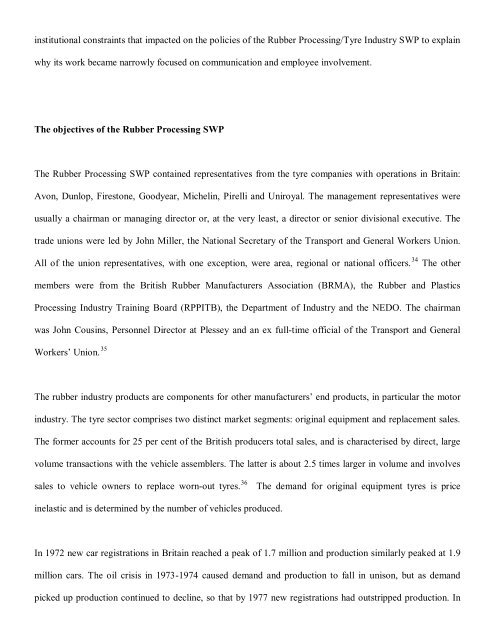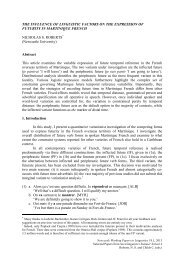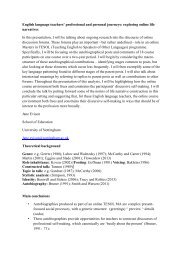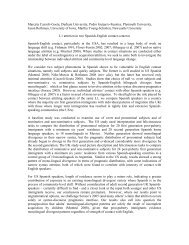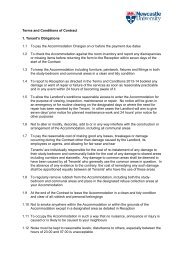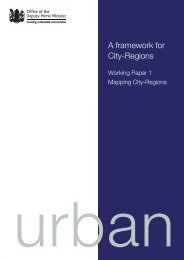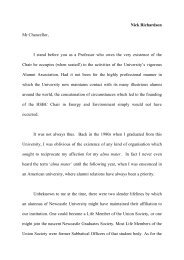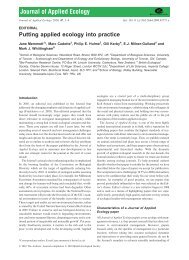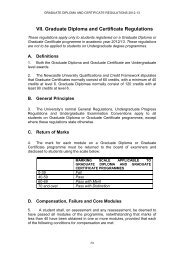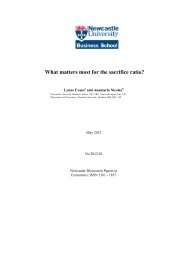The decline of the British tyre industry - Newcastle University
The decline of the British tyre industry - Newcastle University
The decline of the British tyre industry - Newcastle University
Create successful ePaper yourself
Turn your PDF publications into a flip-book with our unique Google optimized e-Paper software.
institutional constraints that impacted on <strong>the</strong> policies <strong>of</strong> <strong>the</strong> Rubber Processing/Tyre Industry SWP to explain<br />
why its work became narrowly focused on communication and employee involvement.<br />
<strong>The</strong> objectives <strong>of</strong> <strong>the</strong> Rubber Processing SWP<br />
<strong>The</strong> Rubber Processing SWP contained representatives from <strong>the</strong> <strong>tyre</strong> companies with operations in Britain:<br />
Avon, Dunlop, Firestone, Goodyear, Michelin, Pirelli and Uniroyal. <strong>The</strong> management representatives were<br />
usually a chairman or managing director or, at <strong>the</strong> very least, a director or senior divisional executive. <strong>The</strong><br />
trade unions were led by John Miller, <strong>the</strong> National Secretary <strong>of</strong> <strong>the</strong> Transport and General Workers Union.<br />
All <strong>of</strong> <strong>the</strong> union representatives, with one exception, were area, regional or national <strong>of</strong>ficers. 34 <strong>The</strong> o<strong>the</strong>r<br />
members were from <strong>the</strong> <strong>British</strong> Rubber Manufacturers Association (BRMA), <strong>the</strong> Rubber and Plastics<br />
Processing Industry Training Board (RPPITB), <strong>the</strong> Department <strong>of</strong> Industry and <strong>the</strong> NEDO. <strong>The</strong> chairman<br />
was John Cousins, Personnel Director at Plessey and an ex full-time <strong>of</strong>ficial <strong>of</strong> <strong>the</strong> Transport and General<br />
Workers’ Union. 35<br />
<strong>The</strong> rubber <strong>industry</strong> products are components for o<strong>the</strong>r manufacturers’ end products, in particular <strong>the</strong> motor<br />
<strong>industry</strong>. <strong>The</strong> <strong>tyre</strong> sector comprises two distinct market segments: original equipment and replacement sales.<br />
<strong>The</strong> former accounts for 25 per cent <strong>of</strong> <strong>the</strong> <strong>British</strong> producers total sales, and is characterised by direct, large<br />
volume transactions with <strong>the</strong> vehicle assemblers. <strong>The</strong> latter is about 2.5 times larger in volume and involves<br />
sales to vehicle owners to replace worn-out <strong>tyre</strong>s. 36<br />
inelastic and is determined by <strong>the</strong> number <strong>of</strong> vehicles produced.<br />
<strong>The</strong> demand for original equipment <strong>tyre</strong>s is price<br />
In 1972 new car registrations in Britain reached a peak <strong>of</strong> 1.7 million and production similarly peaked at 1.9<br />
million cars. <strong>The</strong> oil crisis in 1973-1974 caused demand and production to fall in unison, but as demand<br />
picked up production continued to <strong>decline</strong>, so that by 1977 new registrations had outstripped production. In


